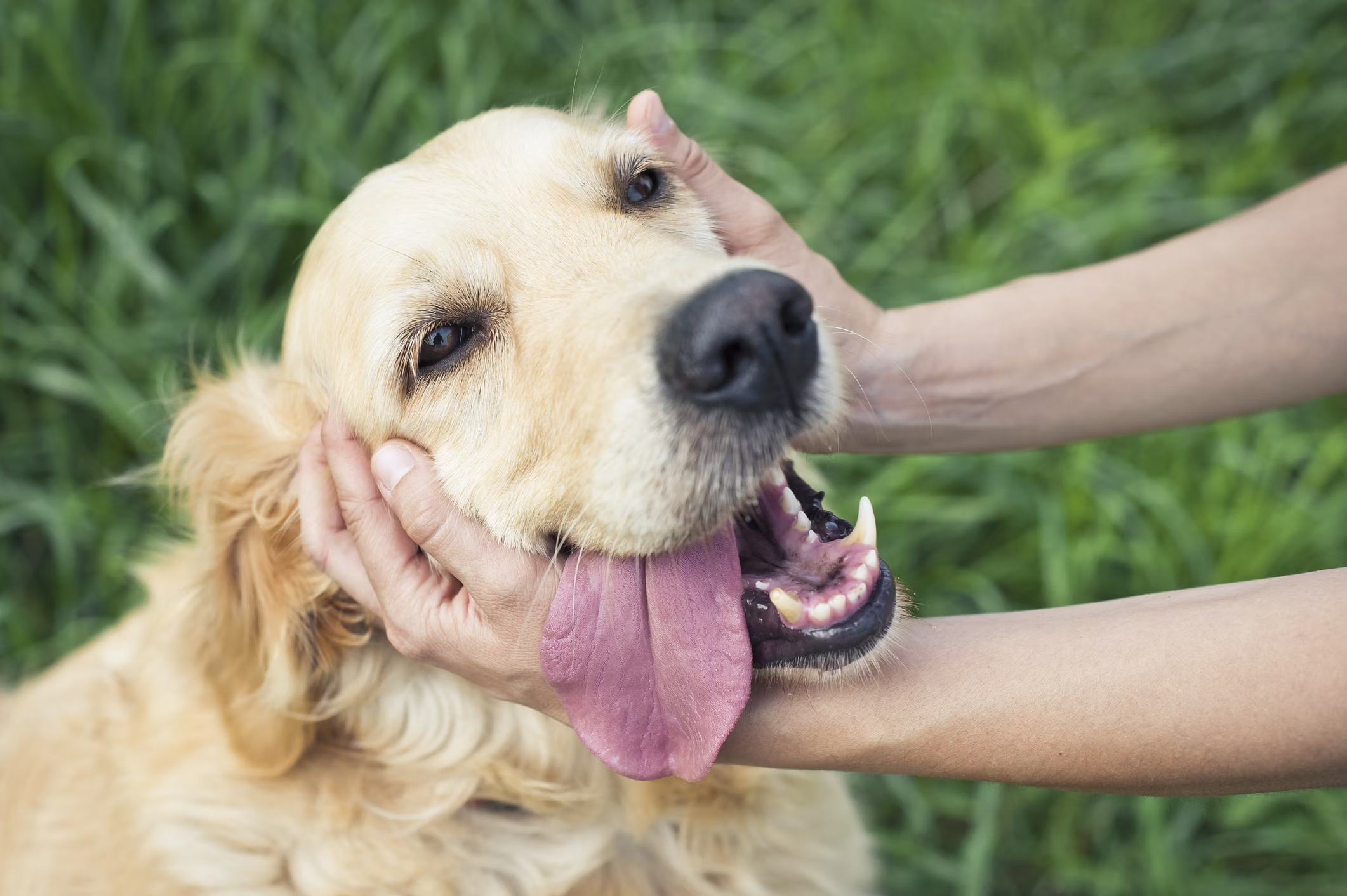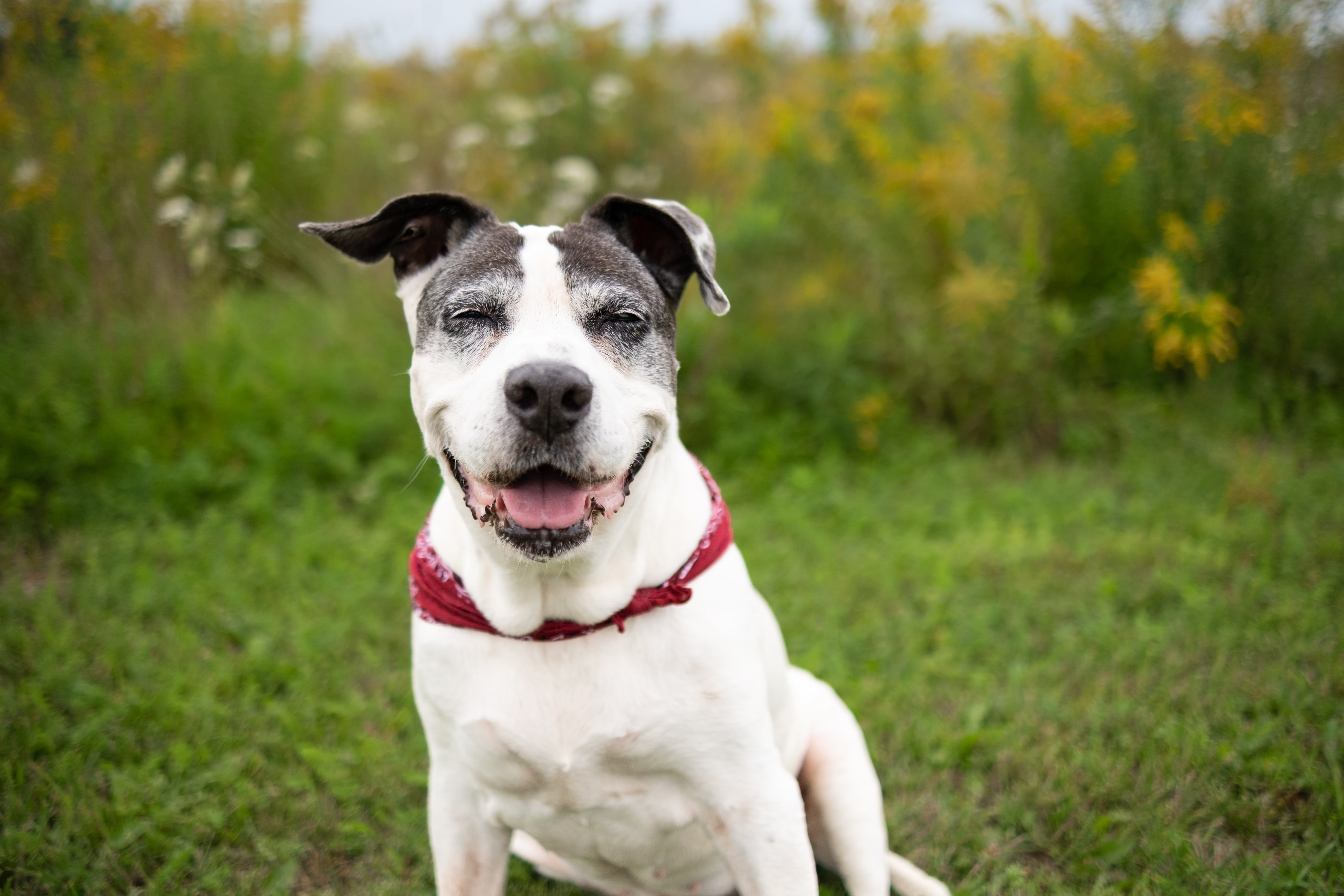Neurological diseases in dogs can be a scary prospect for pet parents. And while no one wants their pup to have a condition affecting their nervous system, understanding the causes, warning signs, and treatment options can help manage risks and ensure dogs are getting the care they need to lead their best lives.
What are neurological problems in dogs?
Neurological issues affect the nervous system, which includes the brain, spinal cord, and nerves. The brain acts as the control center of the body. It’s responsible for processing information and sending signals through the spinal cord to the rest of the body through an intricate system of nerves. When something is impacting the nervous system’s ability to send and receive information, it can cause a variety of side effects.
Depending on the type of neurological disorder a dog has, they can experience changes to their physical or cognitive abilities. For example, some neurological conditions may impair a dog’s movement, while others may cause confusion or behavioural changes.

Causes of neurological problems
Some dogs are born with neurological issues while others develop them over time due to genetic or environmental factors. The most common causes for neurological issues include:
- Genetics: Many neurological conditions are inherited. Some dogs are born with neurological conditions while others that have a genetic predisposition can develop conditions over time. DNA testing, like the options available through Wisdom Panel, is a crucial tool for identifying genetic risks. By understanding a dog’s genetic health, breeders can make responsible decisions about their programs and pet parents have information they need to take the best care of their dogs.
- Injury: Physical trauma—such as a spinal or head injury—can damage the nervous system, leading to various neurological issues.
- Cancer: Tumours in the brain or spinal cord can disrupt normal neurological function.
- Ingesting toxins: Certain toxins—such as rat poison, pesticides, antifreeze, and chocolate—can cause adverse reactions in the nervous system.
- Inflammatory diseases: Inflammation in the central nervous system can be caused by viruses, including distemper and toxoplasma, or immune-mediated disorders.
Signs of neurological problems in dogs
Properly diagnosing a neurological issue requires a thorough veterinary exam and diagnostic testing. Signs that may indicate neurological diseases include:
- Unsteady gait or trouble walking
- Seizures or convulsions
- Loss of vision
- Loss of coordination
- Paralysis or weakness in limbs
- Head tilting or circling
- Changes in behaviour or personality
- Pain, especially neck or back pain
- Potty accidents in the house
- Confusion or disorientation
If you notice any of these signs in your pup, it’s important to make an appointment with your veterinarian.

Most common neurological disorders in dogs
Intervertebral Disc Disease
Intervertebral Disc Disease (IVDD) occurs when the discs between the vertebrae of the spinal column burst or bulge into the spinal cord space. You may hear this condition described as a "slipped disc." IVDD can cause severe pain and nerve damage.
A veterinarian diagnoses IVDD through a combination of physical examinations, neurological assessments, and imaging tests such as X-rays. Treatment varies based on the severity of the condition and can range from rest and anti-inflammatory medications to surgical interventions.
Commonly affected breeds include:
- Dachshunds
- Beagles
- Cocker Spaniels
- Lhasa Apsos
- Dobermann Pinschers
- Corgis
- German Shepherds
- Basset Hounds
Maintaining a lean weight and healthy musculature, and avoiding high-impact activities like jumping, can reduce the risk of IVDD.
Degenerative Myelopathy
Degenerative Myelopathy (DM) is a progressive disease affecting the spinal cord. It typically occurs in older dogs and can lead to weakness, loss of coordination, and paralysis, primarily in the hind limbs.
Veterinarians often diagnose DM after ruling out other conditions, such as arthritis or hip dysplasia. There is no cure for DM, and treatment focuses on supportive care, including physical therapy to maintain muscle strength and mobility. Your vet may also recommend changes to your pup’s home environment, such as ramps to prevent climbing or jumping, or harnesses to assist them on stairs.
DM is common in breeds such as:
- German Shepherds
- Pembroke Welsh Corgis
- Boxers
Genetics play a role in DM, and DNA testing can provide insight into a dog’s predisposition to this disease.
Epilepsy
Epilepsy in dogs causes recurrent seizures due to abnormal electrical activity in the brain. Put another way, something goes wrong with your pup’s internal "wiring," causing your dog to convulse or display jerky movements.
Diagnosing epilepsy requires a thorough medical history, neurological examinations, and diagnostic tests like blood work and MRIs to rule out other causes. Treatment typically involves anti-seizure medications, which require regular monitoring and adjustments by your veterinarian.
Epilepsy is often genetic, with predisposed breeds including:
- Beagles
- Belgian Tervurens
- Labrador Retrievers
Vestibular disease
Vestibular disease affects the inner ear, which controls balance and coordination. Dogs that have vestibular disease may tilt their heads, drool, walk in circles, or lose their balance.
Common causes of vestibular disease include ear infections, hypothyroidism, ruptured ear drums, or tumors. In many cases, the disease will resolve on its own if your veterinarian is able to treat the underlying cause. However, your vet may also provide supportive care, including anti-nausea medications or sedatives. This condition is more common in older dogs.

Wobbler syndrome
Wobbler syndrome, or Cervical Spondylomyelopathy, is caused by compression of the spinal cord at the neck. The condition leads to a wobbly gait, neck pain, and potential paralysis.
Diagnosing Wobblers syndrome involves neurological examinations and imaging tests like MRIs. Treatment depends on the severity of the condition, with options ranging from anti-inflammatory medication and physical therapy to surgery to relieve compression.
Wobbler syndrome typically impacts large and giant dogs. Breeds commonly at risk include:
- Great Danes
- Doberman Pinschers
- Rottweiler
- Irish Wolfhound
Neuroaxonal dystrophy
Neuroaxonal dystrophy is a neurodegenerative disorder. Signs of this disease include movement abnormalities, abnormal vocalization, incontinence, and behavioural changes. As the disease progresses, it can lead to an inability to swallow, stand, and walk.
Diagnosis of neuroaxonal dystrophy is often confirmed through clinical signs and genetic testing. There is no cure, so treatment focuses on supportive care and managing symptoms to improve the quality of life.
Breeds predisposed to neuroaxonal dystrophy include:
- Rottweilers
- Spanish Water Dogs
- Papillon
Cerebellar ataxia
Cerebellar ataxia is a group of disorders affecting the cerebellum—the part of the brain responsible for coordination. These disorders cause uncoordinated movements, tremors, and difficulty walking. There is no cure, but supportive care and physical therapy can help manage symptoms.
This genetic condition is often seen in breeds including:
- Jack Russell Terriers
- Scottish Terriers
- American Staffordshire Terriers
- Old English Sheepdogs
Final thoughts
Neurological conditions in dogs is a broad topic, and ultimately, diagnosing and treating conditions requires a close partnership with your veterinarian. By understanding the potential causes, and recognizing early signs, and being proactive, you can help your pup live a happy, high-quality life.
Additional resources
- https://www.ncbi.nlm.nih.gov/pmc/articles/PMC10668755/
- https://www.mdpi.com/2306-7381/9/8/429
- https://www.merckvetmanual.com/dog-owners/brain,-spinal-cord,-and-nerve-disorders-of-dogs/nervous-system-disorders-and-effects-of-injuries-in-dogs
- https://www.ncbi.nlm.nih.gov/pmc/articles/PMC8829331/#:~:text=Inflammatory%20disease%20affecting%20the%20central%20nervous%20system%20(CNS)%20in%20dogs,agents%20(1–6)
- https://www.ncbi.nlm.nih.gov/pmc/articles/PMC10365067/














